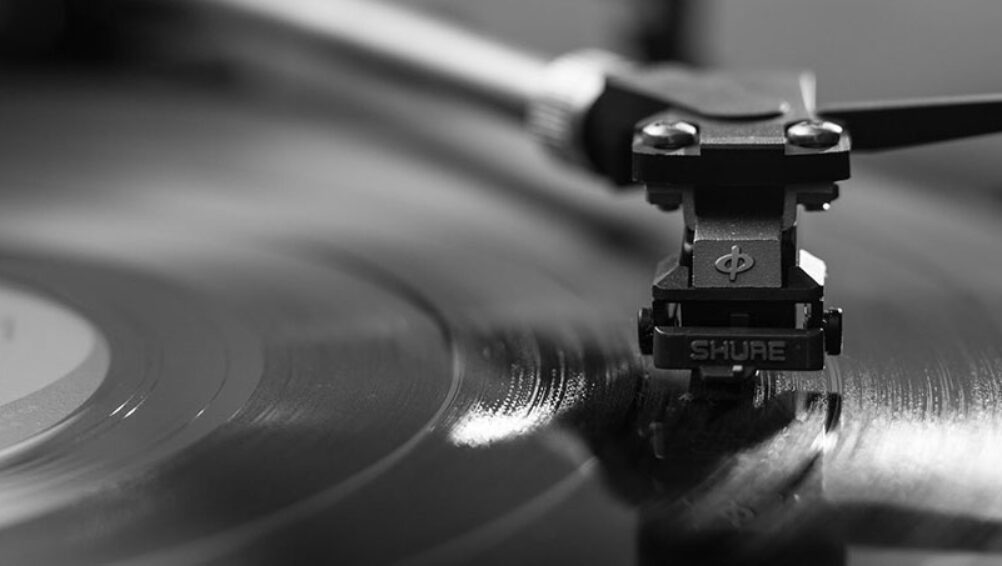We’ve written before about the diverse ways laser marking and engraving systems have been used for varied industries, amplifying emerging technologies and producing a lot of amazing end products.
But some recent news shows just how versatile laser engraving can be, as it’s being used to enhance technology that’s existed since the 19th century. Let’s take a look at the recent reemergence of vinyl records into the marketplace and how one company is looking to laser engraving to boost the medium’s profile even further.
Vinyl Records’ Resurgence
The staying power of records has been incredibly impressive. Originally developed in the mid-1800s, the medium became the dominant format for music for the majority of the 20th century. Only in the 1990s, with the convenience and small size of cassette tapes and CDs acting as competition, did the record format begin to wane.
But even faced with such significant competitors, the record industry never completely went away, with many bands choosing to release their albums on vinyl alongside CDs, and later, mp3s. And as a lot of music lovers know, in recent years vinyl records have begun to significantly come back in the marketplace, with more albums being released on the format, and many older titles getting deluxe rereleases.
- As New Atlas reports, vinyl sales have slowly grown year over year, and Sony recently announced it would be reopening a vinyl plant for the first time in thirty years
- CNBC, meanwhile, reported that 2016’s 13 million sales for vinyl records was the medium’s highest numbers since 1991
Reasons commonly cited for vinyl’s longevity and recent resurgence include:
- Nostalgia from Baby Boomers who grew up utilizing the format
- Interest from younger collectors due to records’ retro appeal
- The audio quality is considered superior to other mediums since it is the closest format to the originally performed sound – all other formats go through various generations of processing, losing some level of quality
- The look and tactile nature of vinyl records
- The accompanying artwork and inserts, something CDs don’t always fully replicate, and mp3s lack
With the market growing, finding new ways to capitalize on the medium has led to at least one company looking to laser engraving systems as a useful tool.
Laser Engraving on Vinyl
In 2016, Austrian company Rebeat patented a new method for producing vinyl records through laser engraving, and with a recent increase in their funding, they are now hoping to bring the records to market in 2019.
The company is calling the new records HD vinyl, and as New Atlas reports, the records have “longer playing time, more amplitude than current records, and better sound quality.”
How Does It Work?
- The digital master audio data is converted into a topographical image representing a 3D inverted surface model for the music in question. Additional mastering can then be conducted, and groove size can be evaluated to prevent any unneeded gaps during printing.
- Laser engraving is then used to create a 3D image on a ceramic plate. With traditional vinyl pressing, nickel stampers are used instead of ceramics. Nickel stampers wear out faster than ceramics, producing records that diminish in quality as the stamping plate loses detail.
- Rebeat states that by using laser engraving along with its ceramic plates, up to 10,000 records will be able to be produced without any wear and loss in quality.
- The company also says that by utilizing laser engraving over traditional vinyl pressing methods, they will be able to reduce manufacturing time by 60%!
All HD vinyl records Rebeat produces will be backwards compatible, able to be played on any standard turntable. Be sure to look for more news on this exciting development in the future!
Laser Engraving on Oreo Records
Another bit of news for laser engraving in the world of music comes from the Oreo cookie company of all places. As Digital Music News reports, Oreo partnered with a company called Dimension Plus to create Oreos capable of being played on a special turntable.
The company engraved grooves on the iconic cookies which would produce the Oreo brand’s theme song in diverse styles, including jazz, classical, electronic, and Chinese pop music.
All of this was done in an effort to appeal to Chinese teenagers, producing both a whimsical and memorable marketing campaign, and one directly linked to the current rebirth and popularity of vinyl records.
This is fascinating stuff, and we can’t wait to see the next novel way laser marking and engraving is utilized by companies!
Follow Our Blog!
For more insights into laser marking, engraving, and etching technology, along featurettes on industry leaders and news about laser developments, be sure to follow our blog!

